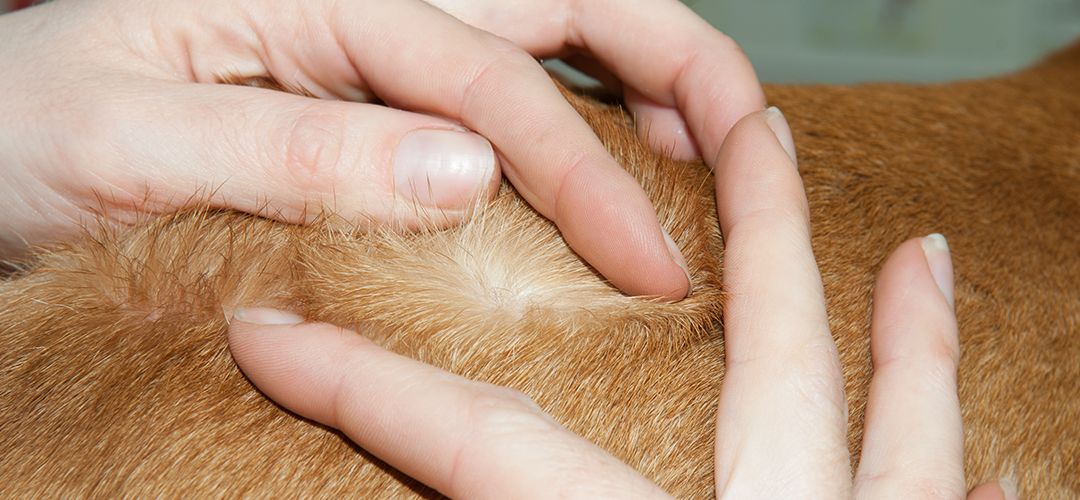Quick tips to prevent and check for ticks and fleas on your dog

Ticks and fleas, although different, share common traits: they can transmit infection and cause health issues.
So how can you rid your dog of them?
Prevention is the best way to protect your pets (and yourself) against tick and flea-borne diseases, such as Lyme disease. These creatures are tiny and they can look like a skin lump on your pet’s body. They’ll be found living in wooded areas, tall grass, bushes, or leaves – basically all the areas your dog loves running around in.
Ticks wait for hosts to brush past the foliage they are on and they then latch on to their host. Checking yourself and your pets for ticks is very important, since ticks left on the body for more than 24 hours have a greater chance of passing on diseases.
Fleas often become an ongoing problem because infested pets come inside, brush against furniture, clothing, and bedding, and then are able to reproduce. This causes an indoor infestation. Even if the fleas are then removed from your dog’s body, they will continue to reproduce around the home, reattaching themselves to your pup and starting the cycle again.

Did you know? ‘Tick Bite Prevention Week’ takes place in March each year.
Here are some steps to check and help to prevent the spread of ticks and fleas:
- Regularly groom your dog: Brushing and combing your dog's fur regularly can help you detect any ticks or fleas before they become a problem. Make sure to check your dog's fur thoroughly after walks or outdoor activities.
- Avoid walking your dog in areas known to have ticks: If possible, avoid taking your dog to areas with high tick populations, such as wooded areas or fields with tall grass.
- Wash your dog's bedding: Wash your dog's bedding regularly in hot water to kill any fleas or ticks that may be hiding there. As your dog may have picked them up on a woodland walk, some parasites may transfer onto the bedding once your dog returns home.
- Vacuum frequently: Regularly vacuuming your home can help prevent flea eggs from hatching and keep your indoor environment free of fleas and ticks.
- Use flea and tick prevention products: There are a variety of flea and tick prevention products available, such as topical treatments, collars, and oral medications. Consult with your vet to choose the best option for your dog based on their age, weight, and overall health.
In summary...
Remember to always consult with your vet before using any flea and tick prevention products, as they can have potential side effects and interactions with other medications.
If you’d like to book your first, or your next, appointment with Doggy Styling visit us today at our Cobham dog grooming salon, our Weybridge dog grooming salon, or our Surbiton dog grooming salon.




Leave a comment